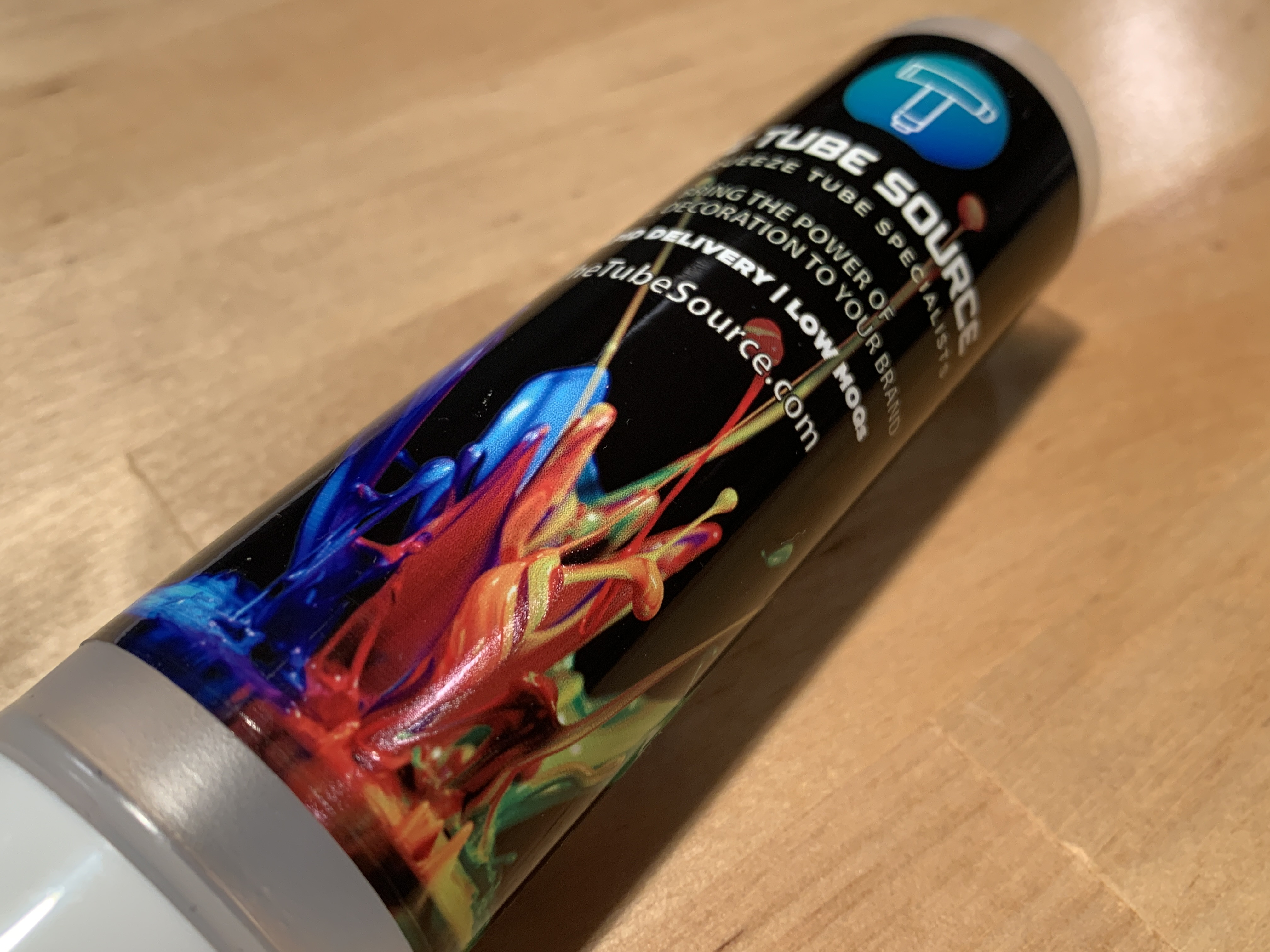May 8, 2023

Picking the right decoration for your tubes is crucial to grab the attention of consumers. Plastic tubes, aluminum tubes, and laminate tubes all have many options for applying your artwork. Some of the most common decorating processes include offset printing, flexo printing, screen printing, digital printing, and pressure sensitive labels.
Pressure Sensitive Labels

The most affordable tube decoration option, especially for small batches, is pressure sensitive labels. Artwork is sent to a label printing specialist and is printed onto a reel of labels in the desired quantity. Pressure sensitive labels are made up of three layers: the back liner with a release coating, the middle adhesive layer, and the outer layer with artwork and texture. These labels are applied directly to squeeze tubes or other round containers via rollers using pressure only, no heat or special solvents are required.
Pressure sensitive labels are available in many textures and finishes. The label reels themselves are typically digitally printed, so image and color quality are always up to professional standards. Minimum order quantities for pressure sensitive labels can be as low as 250 tubes per SKU, while the processes that involve printing plates are usually 10,000 or more. This is also the easiest process to bring in-house with something like a tabletop labeling machine. If you are interested in pressure sensitive labels for your tubes, click here to read more.
Digital Printing

Another good option for small production runs is digital printing. Here, the artwork passes directly from a computer to a digital print head, which applies ink directly to the tube. Multiple colors can be printed on top of the last before drying as well.
Due to the direct nature of digital printing, perfect color matching is easily achieved. There are no limits on fonts or images that can be used. All of this results in eye-catching products that command attention.
Offset Printing
Offset printing is a very popular choice when vivid colors are desired. The first step is to create a metal relief printing plate for each color of ink that will be used. The ink is transferred from the printing plates to a rubber blanket, which then rolls over the substrate and “offsets” the ink onto your tube.
The benefits of offset printing include high printing accuracy with bright colors, the ability to use many different font sizes, and cost-effectiveness for high production runs. The need for custom printing plates for each color used make offset printing unreasonable for smaller projects.
Flexo Printing
Flexographic, or Flexo, printing is different from other printing processes mostly in the way the printing plates are made. Individual printing plates are required for each color like with offset printing, but Flexo plates are made from flexible photopolymers. These photopolymer plates are wrapped around the plate cylinder and transfer ink directly from plate to substrate.
If you are looking for high resolution images on your tubes, Flexo printing is an ideal choice. Image quality is great with the printed elements being raised on the plates. One big drawback is low ink opacity, but this is sometimes remedied by using a combination of screen printing.
Screen Printing
Screen printing is a more traditional printing process with some limitations compared to modern processes. Rather than a printing plate, a screen with a film positive is used to transfer ink to your tubes. The film positive ensures ink only passes through exposed areas, leaving the rest of the tube body as it was originally manufactured.
Unlike the processes above that utilize printing plates, screen printing can be suitable for smaller production runs. Due to the use of a screen to transfer ink, font sizes and styles are restricted from being too small or fine. All machine components must be perfectly aligned and calibrated for multiple color printing, which can make the process more complicated than it sounds.
Feel free to reach out and contact us with any questions.

 USA Sales & Service
USA Sales & Service

